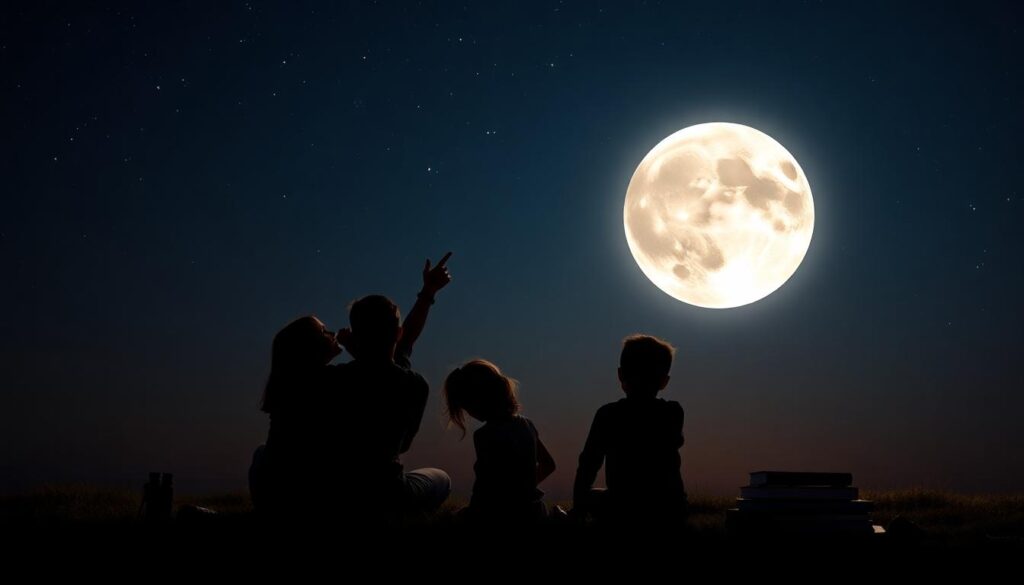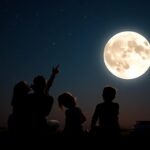Looking for celestial brain teasers to light up your night? Moon riddles offer a perfect blend of astronomical wonder and mental stimulation that’ll have everyone scratching their heads and gazing skyward.
We’ve gathered the most captivating moon riddles that appeal to curious minds of all ages. From simple lunar questions for children to complex cosmic conundrums for adults, these riddles tap into our fascination with Earth’s only natural satellite. They’re perfect for family game nights, classroom activities, or whenever you want to add some celestial charm to your conversations.
Join us as we explore these illuminating moon riddles that challenge your thinking while teaching fascinating facts about our nighttime companion. Whether you’re a seasoned stargazer or just love a good brain teaser, you’ll find something to delight and perplex you in our cosmic collection.
10 Fascinating Moon Riddles to Challenge Your Cosmic Knowledge
- What goes around the Earth but never touches it?
The moon travels around our planet in an elliptical orbit that takes approximately 27.3 days to complete. Even though being Earth’s closest celestial neighbor, it never actually makes contact with our industry’s surface, making this riddle both scientifically accurate and cleverly deceptive.
- I wax and wane but never die, I’m bright at night up in the sky. What am I?
Our lunar companion goes through predictable phases each month, from new moon to full moon and back again. These changing appearances have fascinated humans throughout history, inspiring countless myths and calendars based on its cyclical nature.
- Why didn’t the moon eat dinner?
It was already full! This playful riddle uses the term “full moon” as a pun, referring to both the lunar phase when we can see the entire illuminated side of the moon and the feeling of being satiated after a meal.
- What has cities but no houses, forests but no trees, and oceans but no water?
A lunar map shows various named regions called “seas” (maria), “forests” (silvae), and other geographical terms, though these are actually vast plains of basaltic rock and impact craters rather than actual bodies of water or vegetation.
- I’m not a ball but I am round, I shine at night without a sound. Sometimes I’m full, sometimes I’m new. I influence the tides, too. What am I?
The moon’s gravitational pull creates the tides on Earth, causing ocean levels to rise and fall predictably. Its various phases appear differently throughout the month while maintaining its roughly spherical shape.
- What travels around the industry while staying in one corner?
A postage stamp with a moon picture cleverly combines postal imagery with astronomical concepts. The riddle plays on the dual meaning of “around the industry” (mail delivery) and staying “in one corner” (of an envelope).
- I’m bright enough to light your way, but only when the sun’s away. My size appears to change each night, though I remain the same in flight. What am I?
The moon doesn’t generate its own light but reflects sunlight toward Earth. Its apparent size changes slightly due to its elliptical orbit, appearing larger when at perigee (closest to Earth) and smaller at apogee (farthest from Earth).
- Why is the moon like a dollar?
Both have four quarters! This riddle references the four main lunar phases (new moon, first quarter, full moon, and last quarter) while drawing a parallel to the monetary division of a dollar into four equal parts.
- What light can you see that weighs six sextillion tons?
Moonlight comes from our natural satellite with a mass of approximately 7.35 × 10^22 kilograms (or about 6 sextillion tons). Though the light itself has no measurable weight, this riddle cleverly refers to the massive object producing the visible illumination.
- Why did the moon go to the doctor?
Because it was going through a phase! This humorous riddle plays on the double meaning of “phase,” referring both to the moon’s regular cycle of appearances and the common description of temporary human behavioral changes or moods.
The Ancient Mystery: Moon Riddles That Puzzled Our Ancestors
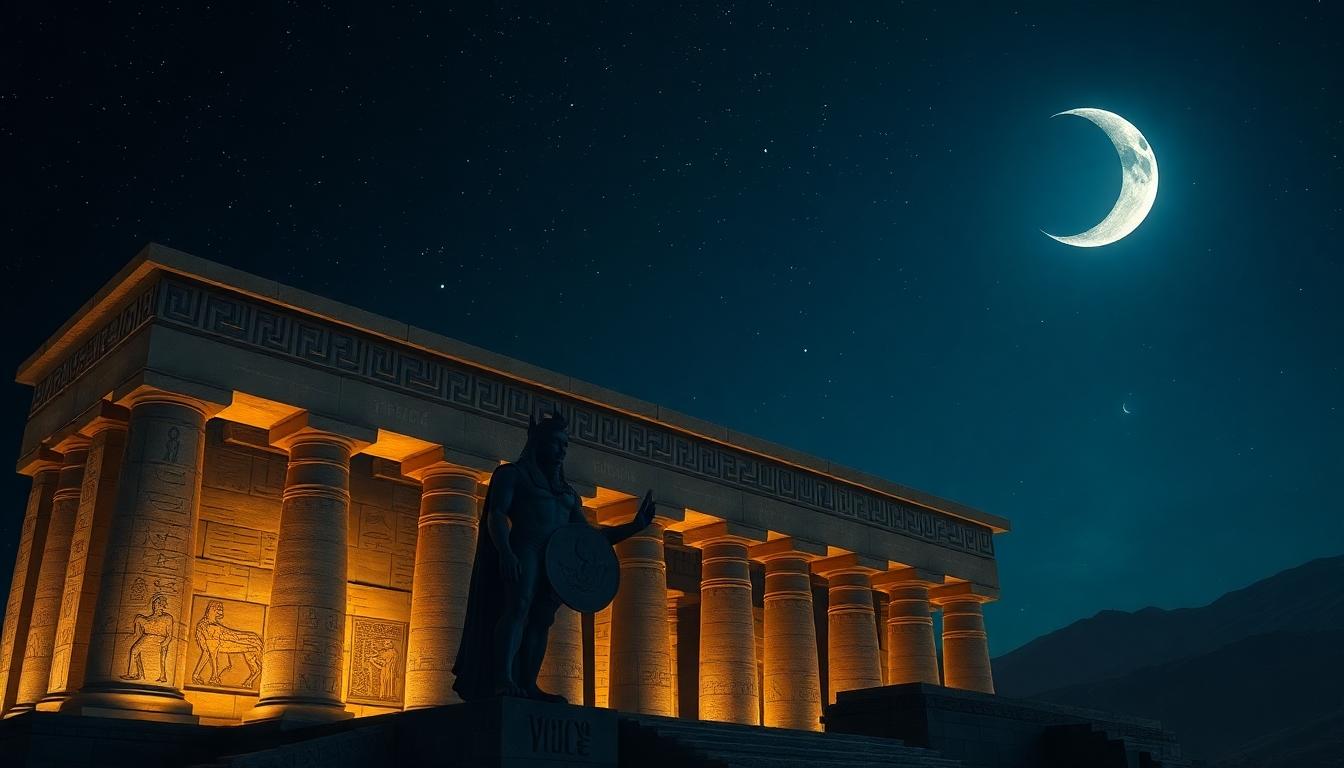
Long before modern astronomy, ancient civilizations developed profound connections with the moon, creating riddles and puzzles that reflected their understanding of lunar movements and symbolism.
Egyptian Moon Enigmas
Ancient Egyptians viewed the moon as a sacred celestial body governed by the god Thoth, who represented wisdom and knowledge. Their lunar calendar contained many riddles designed to test initiates’ understanding of astronomical cycles. One famous enigma asked, “What dies and is reborn each month?” referencing the waxing and waning phases of the moon. Egyptian priests often used these celestial riddles during religious ceremonies to demonstrate their connection to divine knowledge. Hieroglyphic puzzles discovered in tombs frequently incorporated lunar symbols, challenging viewers to decode messages about the afterlife journey guided by moonlight. Papyrus scrolls from the Middle Kingdom period (2000-1700 BCE) reveal complex mathematical riddles that predicted lunar eclipses with remarkable accuracy.
Greek Lunar Conundrums
Greek philosophers and astronomers crafted intricate lunar riddles that blended mythology with early scientific observations. Aristotle himself posed the famous question, “Why does the moon appear to change shape when it maintains its form?” challenging students to contemplate lunar phases. The Oracle at Delphi frequently delivered prophecies encoded in lunar riddles, which pilgrims would decipher to understand their fates. Pythagorean mathematicians created numerical puzzles based on the moon’s 29.5-day cycle, believing these calculations revealed cosmic harmonies. Greek pottery from the 5th century BCE depicts scenes of Artemis, goddess of the moon, presenting riddles to mortals as tests of worthiness. Sailors relied on memorized lunar conundrums that helped them navigate by moonlight across the Mediterranean, passing these valuable puzzles from generation to generation.
Celestial Brain Teasers: Moon-Themed Riddles for Astronomy Enthusiasts

For those who gaze upward with wonder and curiosity, we’ve crafted these specialized lunar riddles that challenge even the most dedicated astronomy buffs.
Phases and Faces of the Moon
The moon’s changing appearance offers perfect material for brain-teasing riddles. Try solving this one: “I’m full once a month but never hungry. What am I?” The answer, of course, is the full moon. Another challenging teaser asks, “I wax but don’t shine shoes; I wane but don’t complain. What am I?” referring to the moon’s phases. Astronomy enthusiasts will appreciate this more technical riddle: “When my eastern limb appears illuminated, am I waxing or waning?” The correct answer is waxing, as the sunlight gradually reveals more of the moon’s eastern edge during this phase. Our favorite phase riddle plays with perspective: “Sometimes you see all of me, sometimes just half, and sometimes none at all, yet I never change my size. What am I?”
Lunar Orbit Puzzlers
The moon’s movement around Earth creates fascinating riddle opportunities for astronomy lovers. Consider this orbital brain teaser: “I travel 2,288 miles per hour but never leave my circular path. What am I?” referring to the moon’s orbital velocity. Another challenging riddle asks, “I complete my journey in 27.3 days, yet from Earth it appears to take 29.5 days to see all my faces. Why is that?” The answer involves the synodic versus sidereal months. Space enthusiasts might enjoy this one: “I maintain the same face toward my companion even though traveling 238,855 miles in a complete circuit. How do I manage this trick?” This riddle highlights the moon’s synchronized rotation and revolution. For advanced astronomers, try: “My path isn’t quite a circle, and I drift about 1.5 inches away each year. What forces cause my slow retreat?” addressing the moon’s gradually expanding orbit due to tidal interactions.
Children’s Moon Riddles: Fun Lunar Puzzles for Young Minds
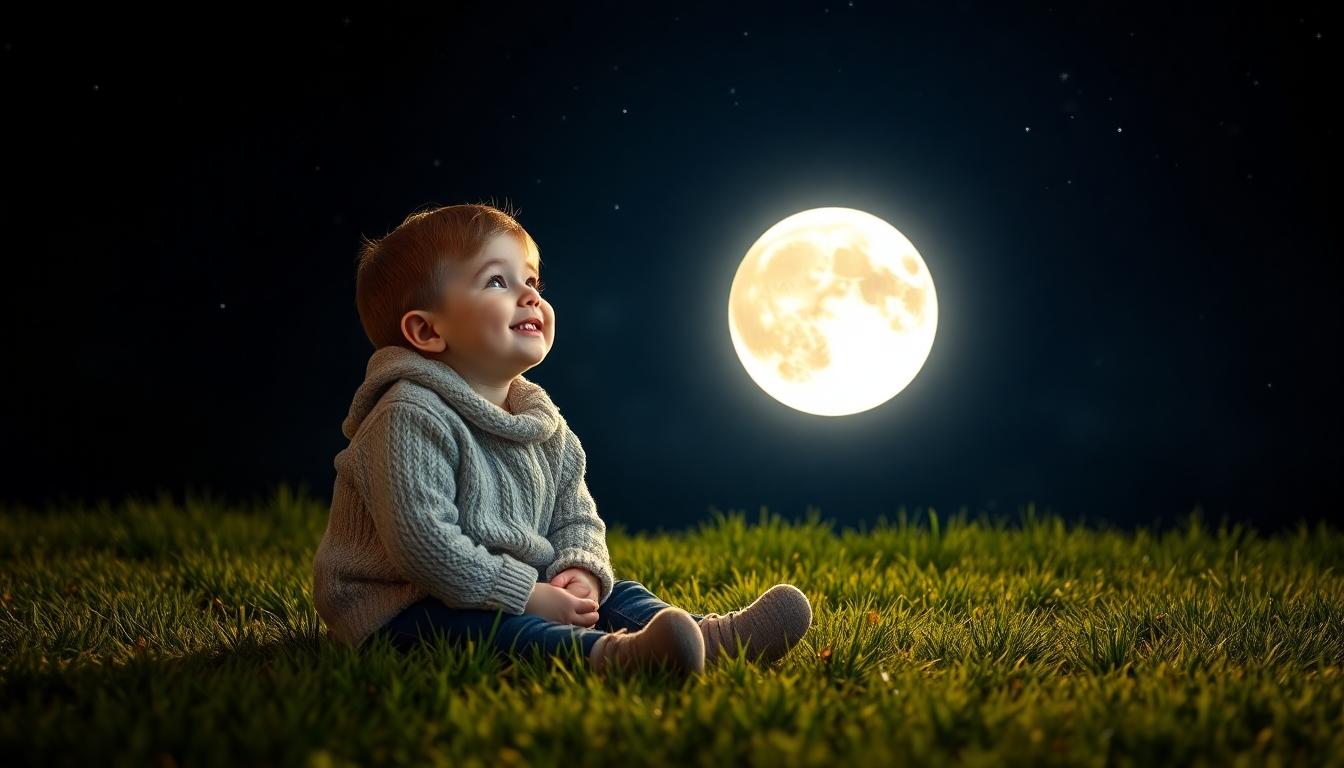
Easy Moon Riddles for Preschoolers
Moon riddles provide a perfect way to introduce young children to lunar concepts while sparking their imagination. These simple puzzles help preschoolers develop critical thinking skills while learning basic facts about our celestial neighbor. Try these kid-friendly lunar riddles with your little ones:
- Round and bright, I light up the night. What am I? (The moon)
- Sometimes I’m full, sometimes half, sometimes just a smile in the sky. What am I? (The moon)
- I’m a big cheese in the sky, but no one can eat me. What am I? (The moon)
- I follow you at night but disappear when the sun comes out. What am I? (The moon)
- I change my shape every night, but I’m always the same thing. What am I? (The moon)
- Some say I’m made of cheese, but astronauts know better. What am I? (The moon)
- I’m a nighttime friend who watches over you while you sleep. What am I? (The moon)
- Twinkle twinkle little star, I’m bigger than you by far. What am I? (The moon)
Challenging Moon Brain Teasers for Elementary Students
- I control the ocean’s waves without touching them. I pull them high and push them low. What am I? (The moon)
- I travel around Earth every 27 days but never need a spaceship. What am I? (The moon)
- Astronauts have visited me, but I have no air to breathe. People left footprints on me that will stay for millions of years. What am I? (The moon)
- I’m covered in dust and have more than 300,000 craters. What am I? (The moon)
- Neil Armstrong took a small step on me that was a giant leap for mankind. What am I? (The moon)
- I’m Earth’s only natural satellite but have no electricity. What am I? (The moon)
- I’m about 1/4 the size of Earth but weigh only 1/81 as much. What am I? (The moon)
- If you weigh 60 pounds on Earth, you’d only weigh 10 pounds on me. What am I? (The moon)
- I have a near side and a far side, but until 1959, humans had only seen one of my faces. What am I? (The moon)
- My surface temperature can reach 260°F during the day and drop to -280°F at night. What am I? (The moon)
Literary Moon Riddles: From Shakespeare to Modern Poetry
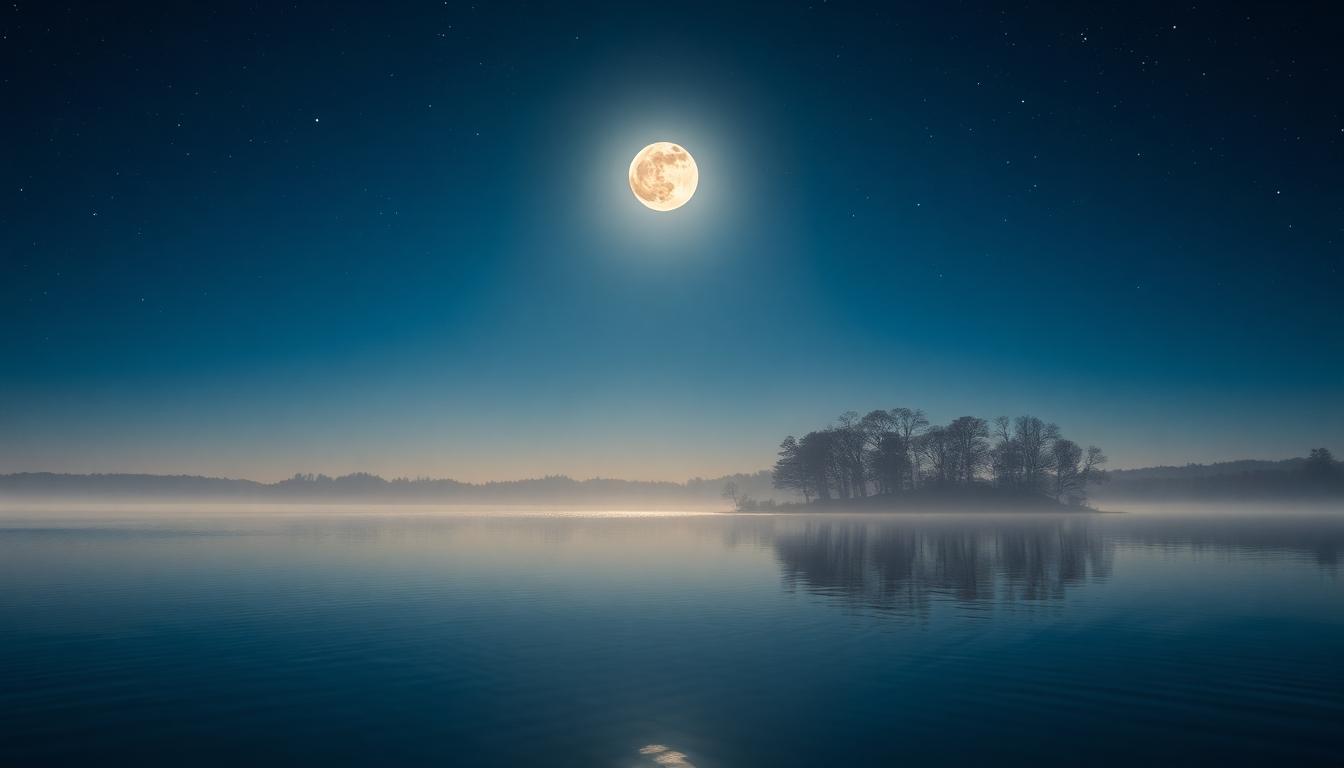
Classical Moon Riddles in Literature
The moon has captivated literary masters for centuries, inspiring some of the most elegant riddles in classical literature. Shakespeare often incorporated lunar imagery in his works, most famously in “A Midsummer Night’s Dream” where he presents the moon as a character and source of mystery. His line “The moon, like to a silver bow new-bent in heaven” creates a visual riddle that challenges readers to see beyond the literal. English Romantic poets such as Percy Bysshe Shelley crafted intricate moon-based enigmas, with Shelley’s “To the Moon” posing the philosophical riddle of the moon’s eternal witness to human suffering. Lord Byron similarly used the moon as a central metaphor in “She Walks in Beauty,” where he essentially creates a riddle comparing a woman’s beauty to “cloudless climes and starry skies.” Ancient Eastern literature also abounds with moon riddles, particularly in Chinese and Japanese poetry, where authors like Li Bai posed questions about the moon’s reflection in water as metaphors for deeper spiritual truths.
Contemporary Lunar Wordplay
Modern poets have reinvented lunar riddles with fresh perspectives and innovative language. Maya Angelou’s works frequently feature the moon as both subject and metaphorical device, creating riddles about resilience and hope. Margaret Atwood employs the moon in her dystopian narratives as a symbol of time and feminine power, crafting riddles that challenge readers to unpack complex social meanings. Contemporary science fiction writers like Ted Chiang merge astronomical accuracy with poetic license in their moon riddles, asking questions about perspective and human existence. Social media has sparked a renaissance of moon-based wordplay, with platforms like Twitter and Instagram hosting viral riddle challenges that combine ancient lunar symbolism with modern meme culture. Award-winning poet Ocean Vuong uses the moon in his collections to pose riddles about immigration and identity, writing “the moon hangs above us like a question waiting to be answered.” Popular spoken word artists often incorporate interactive moon riddles in their performances, captivating audiences with call-and-response puzzles that blend astronomical facts with emotional truths.
Scientific Moon Riddles: Test Your Lunar Knowledge
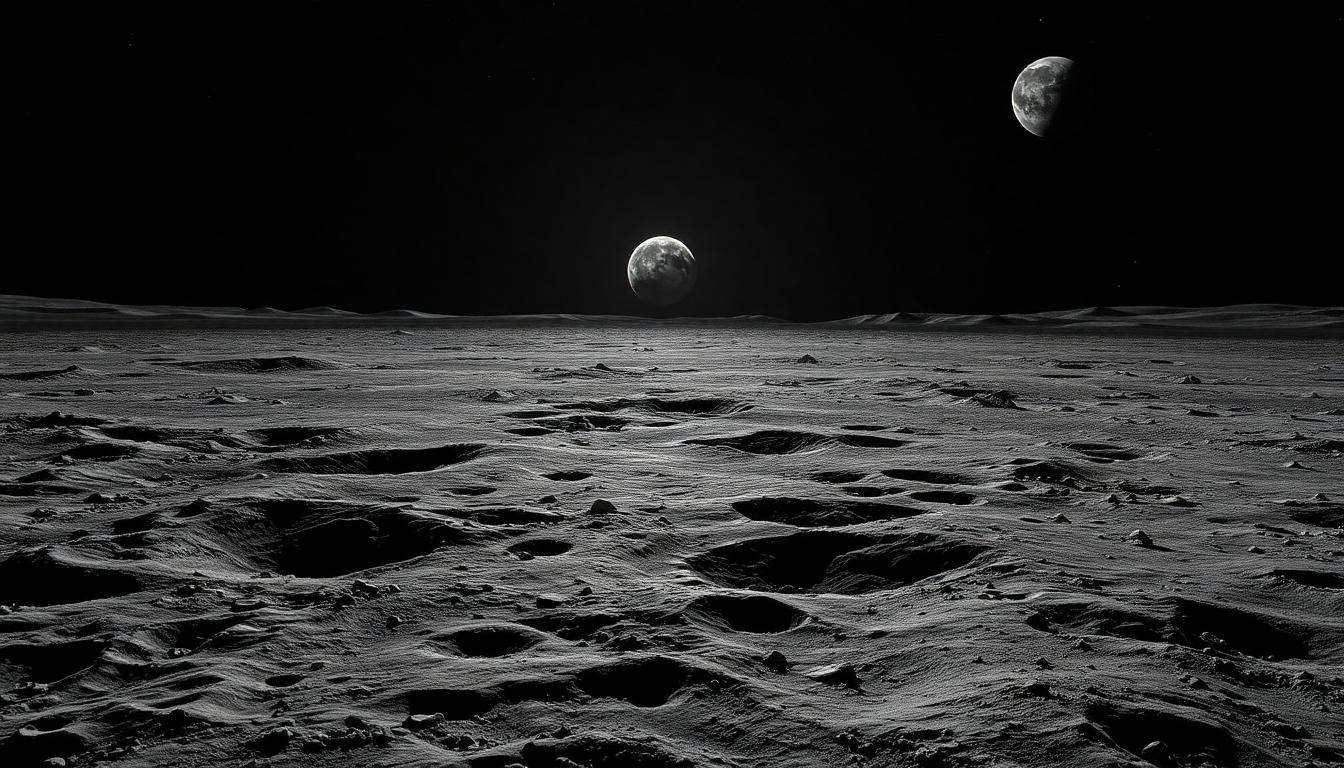
Geology and Geography Brain Teasers
- What am I made of that’s also found in Earth’s crust but in different proportions? Think about my rocky surface composition. Scientists have discovered I contain minerals like feldspar, pyroxene, and olivine, but with unique lunar variations. (Answer: Silicate minerals)
- I have over 80,000 of these on my surface, some visible from Earth with just binoculars. What are they? These circular depressions formed primarily from ancient impacts. The largest one spans nearly 1,600 miles across and is known as the South Pole-Aitken Basin. (Answer: Craters)
- What lunar industry feature am I describing: dark, flat areas once thought to contain water? Early astronomers mistakenly named me based on Earth features. I actually formed from ancient volcanic eruptions that flooded large impact basins with basaltic lava. (Answer: Mare/Maria or “seas”)
- I’m the powdery substance that covers the lunar surface and caused problems for astronauts. What am I? Formed from billions of years of micrometeorite impacts pulverizing the surface, I’m extremely fine and cling to everything. My particles are sharp and abrasive, damaging equipment and spacesuits. (Answer: Lunar regolith/dust)
- What unusual phenomenon occurs on my surface that creates extreme temperature variations? Without a substantial atmosphere to redistribute heat, my surface temperature ranges from 260°F (127°C) in sunlight to -280°F (-173°C) in shadow. (Answer: Thermal extremes)
Space Mission Mysteries
- I was left behind on the lunar surface in 1969, with over 100 more joining me in subsequent missions. What am I? Deliberately abandoned to allow for return payload capacity, I quietly sit where humans once made history. Some of my companions include hammers, cameras, and even golf balls. (Answer: Scientific equipment/tools)
- What unusual item did Apollo 16 astronaut Charles Duke leave on the moon in 1972? This personal memento captured a family moment and remains preserved in the lunar vacuum. Duke left it facing upward on the dusty surface before departing. (Answer: A family photograph)
- Which lunar mission never actually landed even though traveling all the way there? After an oxygen tank explosion damaged the service module, this mission circled around me before returning to Earth in a dramatic rescue operation that captivated the industry. (Answer: Apollo 13)
- What important lunar “first” happened during Apollo 11 that wasn’t about human steps? Before humans walked on my surface, this mechanical explorer touched down to test the terrain. Developed by the Soviet Union, it accomplished what no human-made object had done before. (Answer: The first robotic lunar landing/Luna 9)
Cultural Moon Riddles from Around the World

Asian Moon Festival Puzzles
Asian cultures celebrate the moon with elaborate festivals filled with unique riddles and puzzles. During China’s Mid-Autumn Festival, families gather to solve “lantern riddles” (灯谜) written on colorful paper lanterns. These traditional puzzles often reference the legend of Chang’e, who drank an elixir of immortality and floated to the moon. Japanese moon viewing parties (Tsukimi) feature riddles about rabbits making mochi on the moon’s surface. Vietnamese children participate in “Trung Thu” activities where riddles like “I am round as a mirror but change shape throughout the month. Mountains and oceans appear on my face though no one has painted them” encourage youngsters to recognize lunar features. Korean Chuseok celebrations incorporate wordplay games that reference the harvest moon, connecting agricultural abundance with cosmic patterns.
Indigenous Lunar Legends and Riddles
Indigenous cultures worldwide have crafted profound moon riddles reflecting their unique celestial understanding. Native American tribes like the Navajo share riddles describing Grandmother Moon’s influence on planting cycles, often phrased as “I govern the waters but never get wet; I tell you when to plant but never touch soil.” Aboriginal Australian Dreamtime stories feature lunar puzzles that explain the moon’s phases through the adventures of ancestral beings. Maori traditions include riddles about Rona, the woman in the moon, who was captured while carrying water during a full moon night. Inuit communities pass down puzzles about the moon’s relationship with hunting seasons, such as “I grow fat when animals hide, and thin when they return.” These cultural riddles demonstrate how diverse societies have observed the same celestial body yet developed distinct interpretations based on their environmental relationships and spiritual beliefs.
The Dark Side: Moon Riddles with a Twist
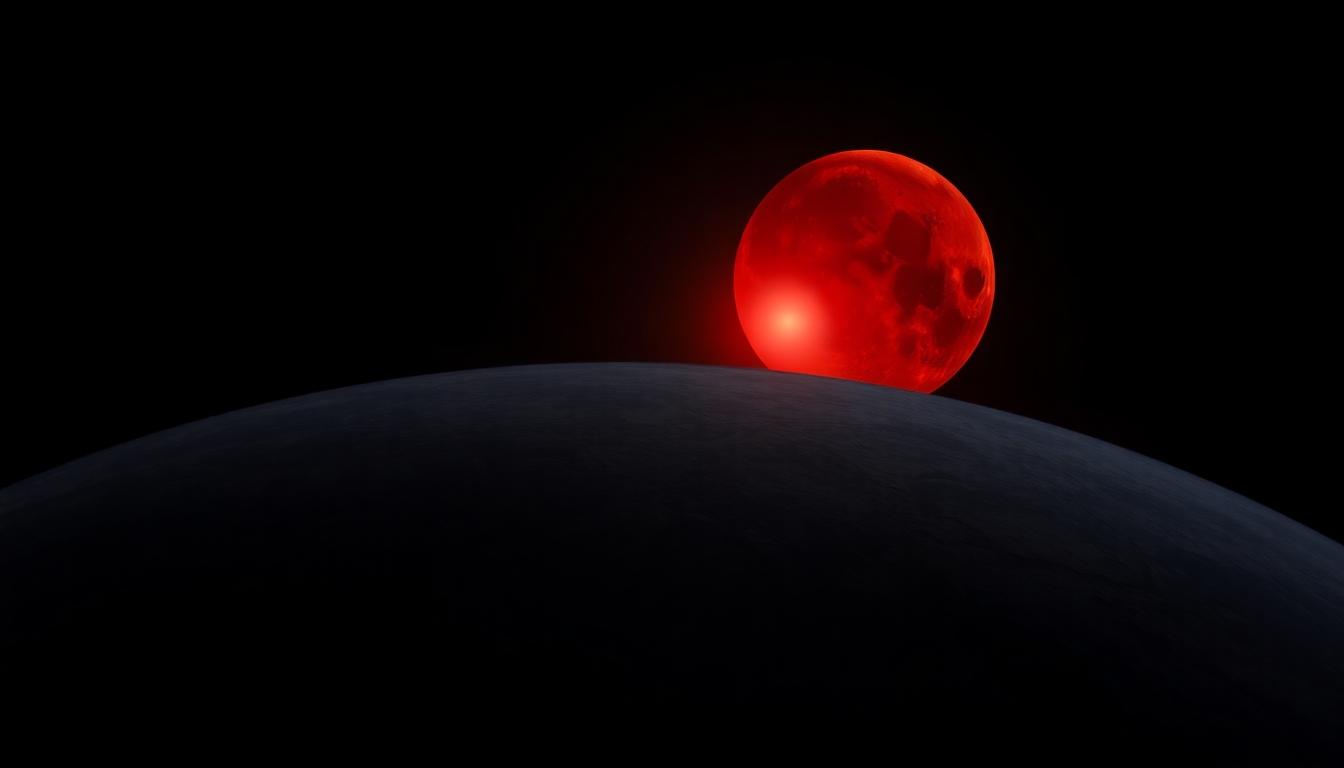
Mysterious Mare Riddles
The dark side of the moon offers a perfect backdrop for our most challenging lunar riddles. Mare regions (those dark patches visible from Earth) inspire these particularly tricky brain teasers that blend astronomical facts with clever wordplay. Try solving “I appear dark but I’m actually bright, I cover 16% of the lunar surface but you’ll never see all of me at once – what am I?” referring to the moon’s mare plains. Another enigma asks, “We look like seas from Earth but contain no water, we’re formed from ancient volcanic eruptions, and astronauts have walked on some of us – what are we?” These mare-themed puzzles require both scientific knowledge and lateral thinking, making them perfect for astronomy enthusiasts looking for a mental challenge beyond basic moon facts.
Lunar Eclipse Enigmas
Lunar eclipses provide rich material for our most mysterious moon riddles. “I dress the moon in red but never touch its surface, I happen only during exact alignments, and I’ve inspired myths across civilizations – what am I?” directly references the blood moon phenomenon during total lunar eclipses. Earth’s shadow creates another compelling riddle: “I turn day to night for the moon, I’m curved because of my creator’s shape, and ancient cultures once feared my appearance – what am I?” These eclipse-based puzzles often incorporate the unique timing elements of eclipses, such as “I can be predicted centuries in advance, I last for hours but the best part only minutes, and I turn silver to copper in the night sky – what am I?” Most eclipse riddles connect celestial mechanics with visual perspectives, challenging solvers to think about astronomical events from multiple angles while appreciating the eerie beauty of these rare lunar events.
Lunar Logic Puzzles: Moon Riddles That Require Deductive Reasoning
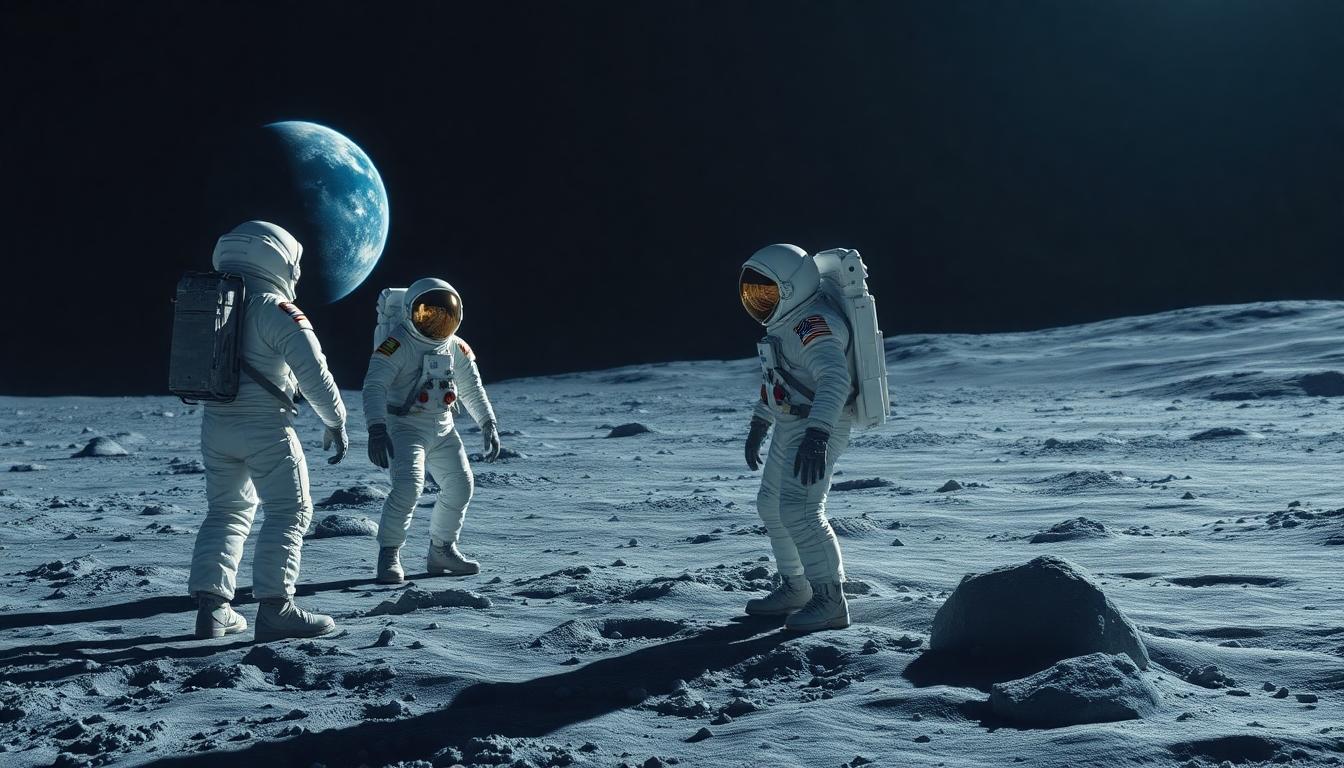
These lunar logic puzzles go beyond simple question-and-answer riddles, requiring careful thought and deductive reasoning to solve. Unlike traditional moon riddles, these brain teasers challenge you to connect multiple clues and think systematically to reach the correct conclusion.
The Lunar Calendar Conundrum: “Three astronomers observe the moon on different days. The first sees it on the 7th day of the month, the second on the 14th, and the third on the 21st. Each observes a different phase. If one sees a full moon, another sees a quarter moon, and the third sees a gibbous moon, which astronomer sees which phase?”
The Selenologist’s Sequence: “Four moon rocks are arranged in a row. The first is not from Mare Tranquillitatis. The second weighs more than the fourth. The third came from the Apollo 11 mission. The fourth is darker than the first. Which rock was collected from the lunar highlands?”
The Astronaut’s Dilemma: “Three astronauts left footprints on the moon. Footprint A is deeper than footprint B. Footprint C is in an area with less regolith than footprint A. Footprint B was made by someone carrying more equipment than the person who made footprint C. Whose footprint will last the longest?”
The Lunar Module Mystery: “Five modules landed on different areas of the moon. The module that landed on flat terrain used less fuel than the one that landed near a crater. The module with the highest fuel consumption didn’t land in the highlands. The module that landed in Mare Serenitatis used more fuel than the one that landed in Mare Tranquillitatis but less than the one that landed in Mare Imbrium. Which module landed safely with the least amount of fuel?”
The Shadow Puzzle: “During a lunar expedition, three astronauts noticed their shadows at different times. Astronaut A’s shadow pointed north at 10:00 AM lunar time. Astronaut B’s shadow was shortest at noon. Astronaut C’s shadow disappeared completely during an equipment check. Where on the moon was Astronaut C standing?”
The beauty of these lunar logic puzzles lies in their complexity and the satisfaction that comes from piecing together the solution. Each puzzle requires methodical thinking, consideration of multiple variables, and careful elimination of possibilities to arrive at the answer. For space enthusiasts and puzzle lovers alike, these deductive reasoning challenges offer an captivating way to test analytical skills while exploring fascinating lunar concepts.
Solving the Ultimate Moon Mystery: Why We’re Drawn to Lunar Riddles
Moon riddles capture our fascination with the night sky while challenging our minds in delightful ways. They connect us to ancient wisdom and modern science through wordplay and wonder.
Whether you’re sharing these cosmic conundrums at your next stargazing party or helping a child discover lunar magic, we hope these riddles have brightened your day like the moon illuminates our night.
Next time you peek upward at our celestial companion, remember there’s always another lunar mystery waiting to be solved. The moon has inspired humanity for millennia—and through these playful puzzles, that inspiration continues to shine.
Frequently Asked Questions
What are moon riddles?
Moon riddles are brain teasers that combine astronomical themes with mental challenges. They incorporate scientific facts about the moon, its phases, orbit, and influence on Earth, often with clever wordplay or puns. These riddles appeal to people of all ages and can be educational while providing entertainment.
How can moon riddles be used with children?
Moon riddles are excellent educational tools for children. Simple versions help preschoolers develop critical thinking skills while learning basic lunar facts. More challenging riddles engage elementary students with scientific concepts in a fun format. They’re perfect for classroom activities, family game nights, or bedtime brain teasers.
Did ancient civilizations have moon riddles?
Yes, ancient civilizations created their own lunar enigmas. Egyptians crafted riddles reflecting lunar cycles and connected to their god Thoth. Greek philosophers like Aristotle developed riddles blending mythology with early astronomical observations. These historical puzzles demonstrate humanity’s long-standing fascination with the moon.
What makes a good moon riddle?
A good moon riddle balances scientific accuracy with creative wordplay. It should challenge the solver’s knowledge about lunar facts while being engaging and entertaining. The best riddles incorporate unique aspects of the moon—its phases, craters, orbit, or cultural significance—while remaining solvable with some thought.
Are there moon riddles for astronomy enthusiasts?
Absolutely! The article features specialized riddles for dedicated astronomy enthusiasts that focus on technical aspects of lunar cycles, synchronized rotation, and orbital mechanics. These more complex riddles challenge even those with substantial knowledge about our celestial neighbor.
How do moon riddles vary across cultures?
Moon riddles reflect diverse cultural interpretations of lunar significance. Asian moon festival puzzles often incorporate folklore elements like the rabbit in the moon. Indigenous lunar legends feature riddles tied to seasonal changes and harvests. Different societies have developed unique riddles based on their relationship with the moon.
What are lunar logic puzzles?
Lunar logic puzzles are complex brain teasers requiring deductive reasoning and systematic thinking. Examples include the Lunar Calendar Conundrum and the Astronaut’s Dilemma. These puzzles challenge space enthusiasts to apply analytical skills while exploring lunar concepts in greater depth than traditional riddles.
How have moon riddles appeared in literature?
Moon riddles have been featured throughout literary history, from classical works to contemporary poetry. Literary masters have used lunar imagery to craft elegant enigmas that captivate readers. These literary riddles celebrate the moon’s mysterious nature and continue to inspire creative expressions across various artistic forms.

